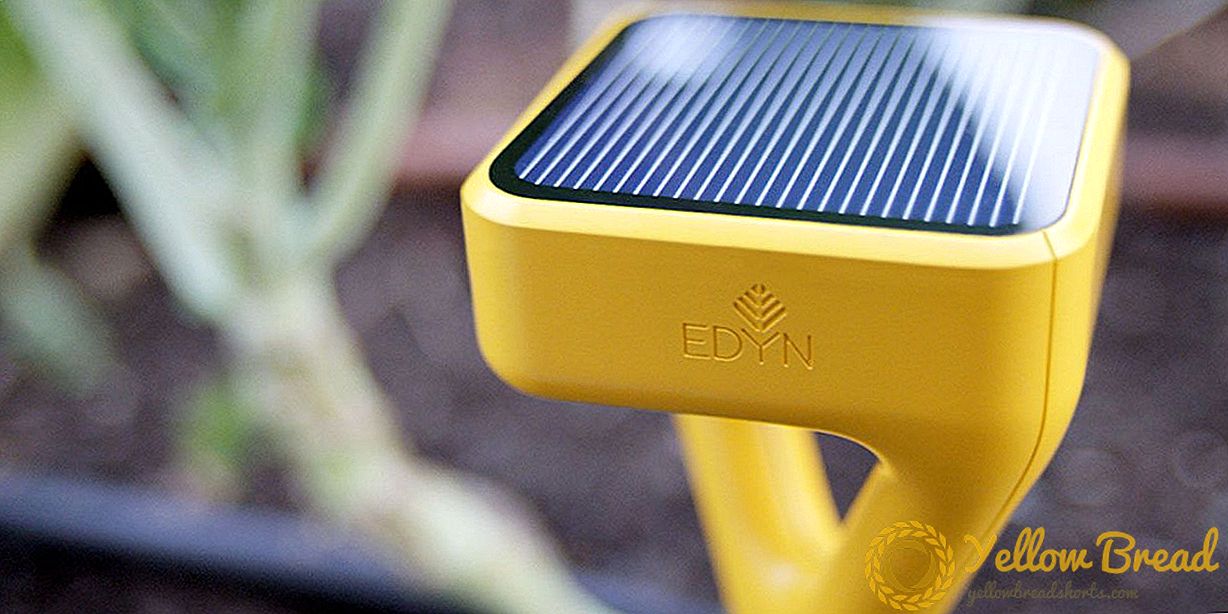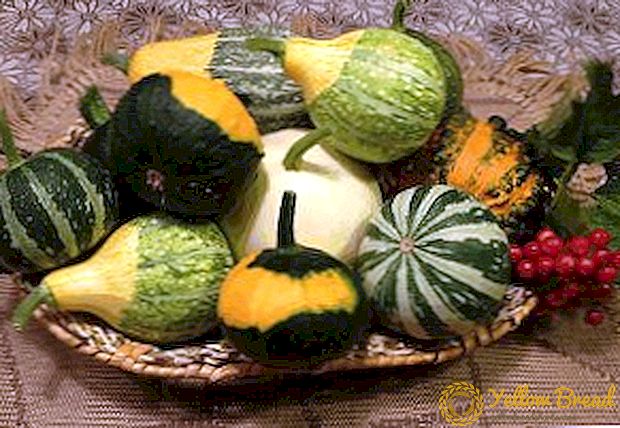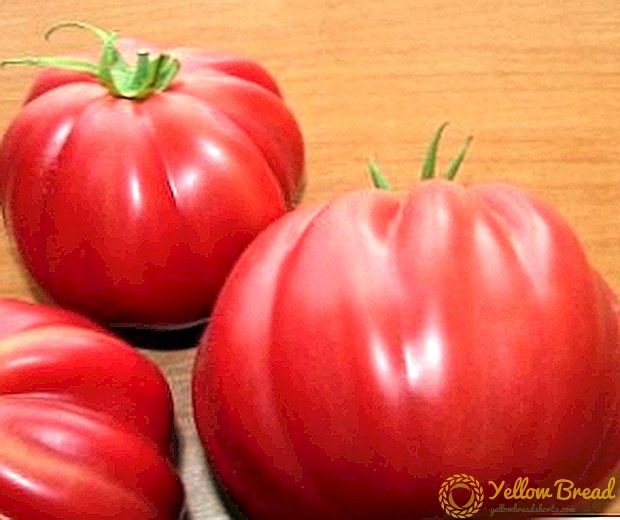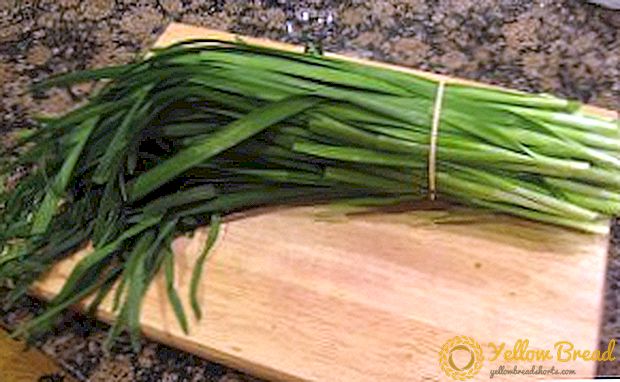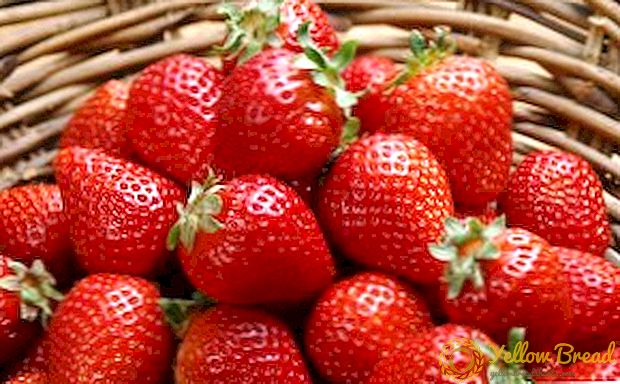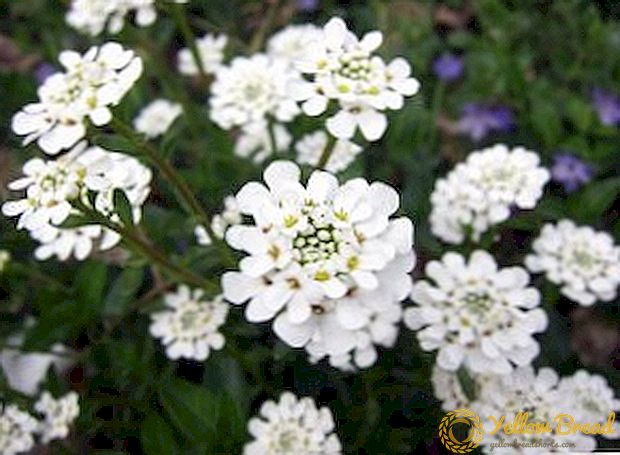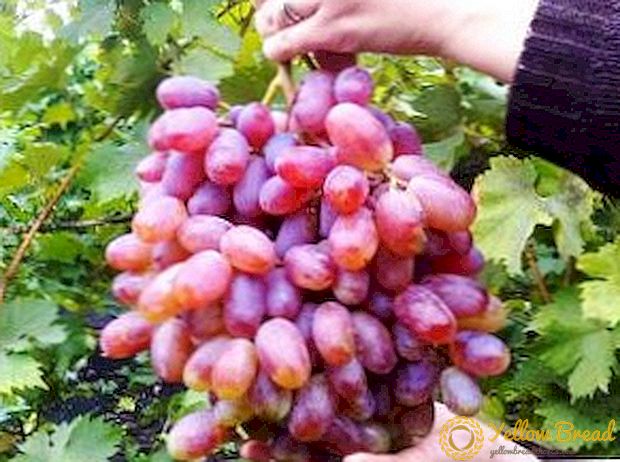 Recently, the grape "Julian" is gaining great popularity because of its qualities, and the self-grown shrub of this variety is the pride of any winegrower. In this article we will get acquainted with the grapes "Julian" - the description and rules of care for the variety, photo.
Recently, the grape "Julian" is gaining great popularity because of its qualities, and the self-grown shrub of this variety is the pride of any winegrower. In this article we will get acquainted with the grapes "Julian" - the description and rules of care for the variety, photo.
- Story
- Description and distinctive characteristics of the variety
- Features of growing
- Lighting
- Soil requirements
- Planting varieties "Julian"
- Selection of seedlings
- Timing
- Landing pattern
- Grade Care
- Watering
- Fertilizer
- Pruning
- How to protect grapes from diseases and pests
- Do I need shelter for the winter
- The advantages and disadvantages of the variety
Story

This variety was developed by V. Kapelyushin, an amateur breeder, by crossing the famous varieties Rizamat and Kesha. According to the statements of many winegrowers, "Julian" has good resistance to cold, but still he feels best in the southern regions. Also an important characteristic is its earlier ripening, the harvest can be collected at the end of July or in August.
Description and distinctive characteristics of the variety
"Julian" refers to the table variety. It ripens quite quickly, as a rule, in three months. Its fruits are oblong in shape with a long stem, in a ripe form they acquire a pink color with a slight yellow tinge, can reach 4 cm in length, and about 3 cm in width.
The grapes "Julian", based on the reviews, has a very sweet and crisp flesh, and its skin is so thin that it can be eaten without any problems. An important quality is the good transportability of grapes and their long storage.
Features of growing
The variety "Julian" is classified as unpretentious, but, like most cultivated varieties, it has certain requirements for the place where it will be planted. =
Lighting
The grapes of this variety prefers places with lots of sunshineTherefore, the winegrowers recommend planting a plant on the south side of buildings or hedges. Also, grapes should be protected from the winds, because its vines do not tolerate a draft. To do this, you can install a protective film or other durable material from the east and north of the plant.
Soil requirements
This variety prefers fertile soil with medium or low acidity. Therefore, if the earth is acidified, you need to add lime to it with the calculation of 200 g per 1 square meter. To improve fertility, it is best to fertilize the land using compost, manure, and mineral fertilizers.
Planting varieties "Julian"
This variety has a good root system, which allows it to root well in the ground, in 95% of cases, grapes take root easily. And the planting of the Julian grapes itself is not much different from the planting of other varieties.
Selection of seedlings
When choosing a plant, the first thing you need pay attention to its roots. The root system must be developed and have at least three strong roots and many small ones.
You also need to make a small cut at the root, it must be white or very light, and at the same time the juice stands out. If the cut is dry and has a dark color, then the seedling is already dead. You can check the condition of the seedling by cutting the top of the plant, you should see a bright green color on the cut.
When buying a sapling with hard bark in the fall, pay attention to the fact that there are no leaves on it, because through the leaves the dug plant extremely quickly loses the necessary moisture and nutrients, this factor makes it very difficult for the grapes to survive.
Timing
Landing dates vary by region. In the southern regions with mild and warm winters landing "Juliana" is carried out from October to March. In other regions, where the climate is cooler, planting seedlings should be dealt with in the spring, before the buds bloom.When blooming buds need to plant cuttings.
Landing pattern
For planting grapes should dig a hole about 80 cm deep and the same in diameter. If the soil in the place where you are going to plant the "Julian" is too wet, you need to fill up the drainage, and a few weeks before planting the seedlings should dig a hole and let it dry.
When the pit is dug, you need to prepare a soil mixture, which consists of soft earth, humus, and add about 400 g of superphosphate. If the soil is clay, you need to add sand to the mixture (as much as the ground).
Grade Care
"Julian", like all other varieties, needs proper care, which is the correct watering, fertilizer and pruning.
Watering
Irrigation mode is very important for the full growth of grapes "Julian". His need water only a few times per seasonn The first watering is carried out a week before flowering, and the next is after it ends. During these irrigations, it is recommended to add a small amount of wood ash to the water.

Fertilizer
"Julian" needs frequent fertilization, as the plant spends a lot of energy on its fruits. Therefore, it is necessary to carry out periodic fertilizers with potassium-phosphorus preparations, introducing them either under the root or spraying.
Also, mineral fertilizers should be added to the soil every year, and in the spring the root should be covered with a layer of compost about 5 cm. This dressing is carried out throughout the growing season, until the fruit ripens.
Pruning
Pruning is no less important than watering and fertilizer, and is a mandatory procedure for the grapes "Julian". When pruning on one vine should be no more than 10 buds, and on the bush should be no more than 45.
In the summer, you need to pruning the clusters so that the berries are larger and have better taste characteristics.In young plants, it is recommended to leave on a bunch bush in an amount equal to the age of the grapes. In the fourth year after planting on the bush, you can leave up to 10 bunches.

How to protect grapes from diseases and pests
"Julian" can be attributed to very young varieties, and therefore its resistance to various diseases is still poorly understood, but some qualities of the grapes are known. This variety received from its progenitor ("Kesh") resistance to such diseases as oidium and downy mildew, or mildew. But still do not neglect preventive measures from these diseases. Protection against oidium is carried out by spraying the bushes with colloidal sulfur.
In the rainy season, in order to avoid anthracnose, which infects leaves and young shoots, forming brown spots on them, “Julian” should be sprayed with Bordeaux mixture. The same liquid can also be useful in case of Alternaria, which occurs in wet, but hot weather and affects the fruits.
"Julian" is resistant to such common problems of vineyards as wasps, spider mites, gray rot, but the disease can occur under conditions favorable to it.To combat it, use antifungal drugs such as Topaz, Khom, Kurzat.

Do I need shelter for the winter
"Julian" - heat-loving varietytherefore, in regions with cold winters, he needs compulsory shelter.
Shelters are often engaged in mid-October; for this, the bush is tied up in a bun and sprinkled with earth 10 cm, it is also recommended to cover the grapes first with a bag, then cover them with earth and cover them with slate or board about 3 cm, then cover them with plastic wrap ingress of water during melting snow. Directly in winter, it is recommended to keep a layer of snow above the plant about half a meter.
The advantages and disadvantages of the variety
The main advantages of the grape "Julian" can be attributed to its resistance to heat, to many diseases and parasites with which it can be attacked, and, of course, its main trump card is high-quality sweet and juicy fruits.
But, based on the reviews of winegrowers, the disadvantages include its weak resistance to frost more than -20 ° C, although most breeders say that it can withstand more.

Summing up, we can say that this grape variety will suit both experienced growers and beginners, because caring for them is relatively simple and does not require large physical and financial costs.

